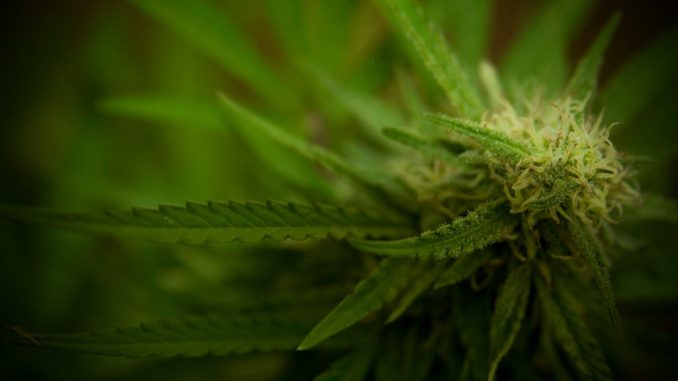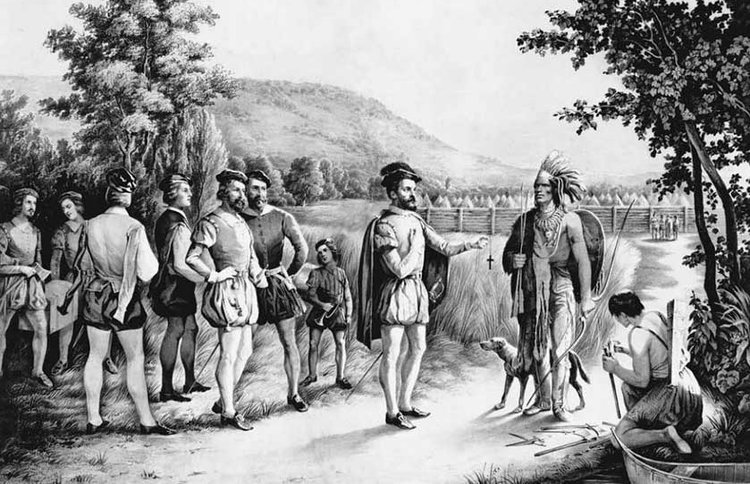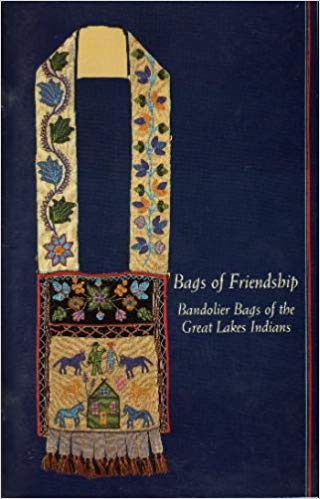
Several times in recent weeks, the idea of pre-Columbian cannabis in the Americas was mentioned to me. Someone on Twitter sent me quote after quote that showed early explorers of the New World, including de Soto and Jacques Cartier, described abundant fields of hemp among other wonderful resources for Europeans to take advantage of and trade back to their homelands.
In the 16th century, France was eager to lay claim to as much of the New World as it could. To that effort, Jacques Cartier set sail and began his exploration. During one of his trips he noted the following in his journal:
At last we came to a very fine and pleasant bay. There is a little river here, and a safe harbor. We named this the St. Croix on account of the day we arrived. Around this place there is a people, whose chief is Donnacona, and his place of living, Stadacona, is here. Fertile soil and very fruitful, numerous fine trees as in France: oak, alm, ash, walnut, yews, cedars, vines, and hawthorns, which produce fruit as large as a damson, and other trees. There also grows a fine hemp as in France without any sowing or cultivation.
From the journals of Jacques Cartier (1491-1557)

Cannabis in the Americas was an important notion to be hopeful for because hemp was an important crop to France as well as the rest of the world. As Cartier mentions above, France had good sources of hemp right at home. But having a surplus meant that it could supply it’s own shipping industry with rope for rigging and hempen sails while being able to sell to other nations, like Britain and Spain.

Borussica 1863. Otto Karl.
Jacques Cartier thought he was in China. After his first trip to the New World (Canada), he returned to France and announced to all that he discovered the passage to China. Never mind it wasn’t China. Never mind that his “discovery” was already well-populated having been discovered thousands of years prior.
In addition to not being a genius navigator, he was also not particularly adept at botany. The “hemp” he discovered turned out to be Acnida cannabina. Today, it’s known as Amaranthus cannabinus, making A. cannabina a taxonomic synonym. In other words, the same species ended up being described twice, both times associating it with cannabis due to its striking similarities at first glance. Cannabis in the Americas? Sort of, but not precisely.

Bags of the Great Lakes Indians
by Richard Porht Jr.
The French, realizing that Cartier’s “fine hemp” wasn’t so fine (and not of the Cannabis genus), still wanted to grow hemp in the New World. To that end, explorer Samuel Champlain brought hemp seeds to New France and, by 1606, hemp was finally growing proper in Nova Scotia “under the watchful eye of the colony’s botanist and apothecary, Louis Hebert.”
As Europeans dominated the Americas, hemp followed. As an industry, it was vital to any nation that wanted to put ships on the seas for trade. Native Americans embraced the fiber, adding it to bast textiles and fabrics for clothing and decorative items like bandolier bags. It seems fitting, perhaps, that these bags–copied from those worn by European soldiers to carry rifle cartridges–might have some made with hemp, a fiber of European origin.
But the question remains: was there cannabis in the Americas (i.e. Cannabis sativa) prior to the 15th century?
There is a definite trend to integrate marijuana into the long list of traditional plants used by Native Americans, but is this an unconscious (or perhaps even a conscious) effort to justify marijuana use itself rather than a fair assessment of its use before European introduction?
At Cannabis Digest, M. Allister Greene writes :
Many tribes have sacred strains that they have grown for hundreds of human generations. As a Native American from more than one tribe, I have some of this information from my direct traditions with the cannabis plant. The rest of my knowledge comes from reading field studies and test reports from dig sites.
Greene, M. Allister (2014). Cannabis in Native American’s Culture and Religion. Cannabis Digest (online)
C. M. Snyder is critical of the inclusion of marijuana as a “traditional” smoking plant for Native Americans (scare quotes belong to Snyder) and actually cites Greene as an example. Greene mentions something interesting, however, which are the field studies and test reports, though they’re not cited. This is actually something I’ve heard anecdotally from one or two other archaeologists: that residue discovered on pipes or pottery came back testing positive for Cannabis.
I’ve searched relevant journals and texts that might include this data, but I’ve yet to find any mention. According to Clarke and Merlin (2013, p.129), the earliest known introduction of hemp to the Americas was in Chile in 1545 when the Spanish brought over seeds for cultivation.
While there are documents and journals of explorers in the 15th century observing “hemp” in the wilds of the Americas, in both North and South America the French and the Spanish (along with the British and, later, the Americans) were forced to bring in seed or import hemp. One would think if there was cannabis in the Americas already, there would not have been this need. Which implies that the “hemp” observed by those such as Jacques Cartier, Hernando de Soto, and others were cases of mistaken identity.
New Research
Incidentally, recent research (McPartland, Hegeman, and Long 2019) shed some light on the origin of Cannabis, which is perhaps at the center of the Tibetan Plateau rather than Central Asia as previously thought. They conclude that the progenitor of Cannabis dispersed from Central Asia to the north-eastern Tibetan Plateau, went through parapatric speciation, then dispersed–as Cannabis— from the Tibetan Plateau to Russia and Europe then to China, making its way throughout Asia by the end of the Pleistocene.
References and Further Reading
The Herb Museum. The Hemp Plant in Canada.
Greene, M. Allister (2014). Cannabis in Native American’s Culture and Religion. Cannabis Digest (online)
Snyder, Charles M. (2019). Restoring Traditional Tobacco Knowledge: Health Implications and Risk Factors of Tobacco Use and Nicotine Addiction. In Perspectives on the Archaeology of Pipes, Tobacco and other Smoke Plants int he Ancient Americas, E. A. Bollwerk and S. Tushingham, Eds. Springer, pp 183-197.
Clarke, Robert C. and Merlin, Mark D. (2013). Cannabis: Evolution and Ethnobotany. University of California Press, California.
McPartland, John M., William Hegman, and Tengwen Long (2019). Cannabis in Asia: its center of origin and early cultivation, based on a synthesis of subfossil pollen and archaeobotanical studies. Vegetation History and Archaeobotany, 1-12, DOI: 10.1007/s00334-019-00731-8
Leave a Reply
You must be logged in to post a comment.